Alberobello’s iconic trulli, with their distinctive cone-shaped roofs, are a captivating sight in Italy.
During our visit to Alberobello, we were immediately drawn to the mysterious symbols adorning the trulli roofs and the varied shapes of their white pinnacles.
What did these enigmatic symbols represent? Why were the white pinnacles atop each trullo uniquely shaped?
This curiosity sparked our quest to uncover their meanings and significance, leading us to discover intriguing details about these ancient emblems.
Each trullo is a masterpiece of ancient building techniques, showcasing a blend of functionality and artistic expression through symbols believed to protect and bless its inhabitants.
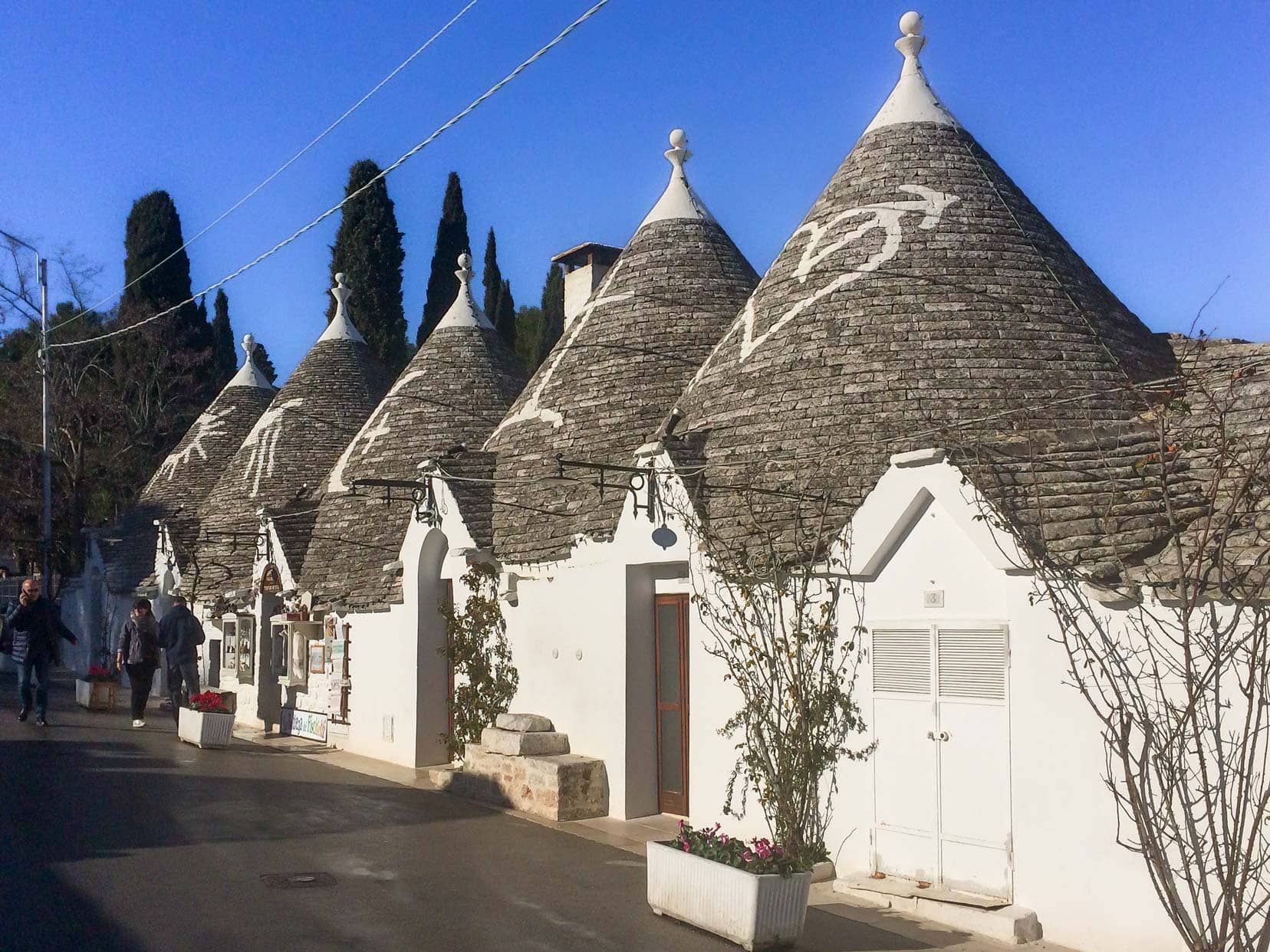
Where Are The Alberobello Trulli?
The amazing Alberobello Trulli is located in the heart of Alberobello, in the district of Bari, Puglia, in southern Italy.
Alberobello Map
Expand the map by clicking the square symbol in the top right corner to explore the trulli locations more closely.
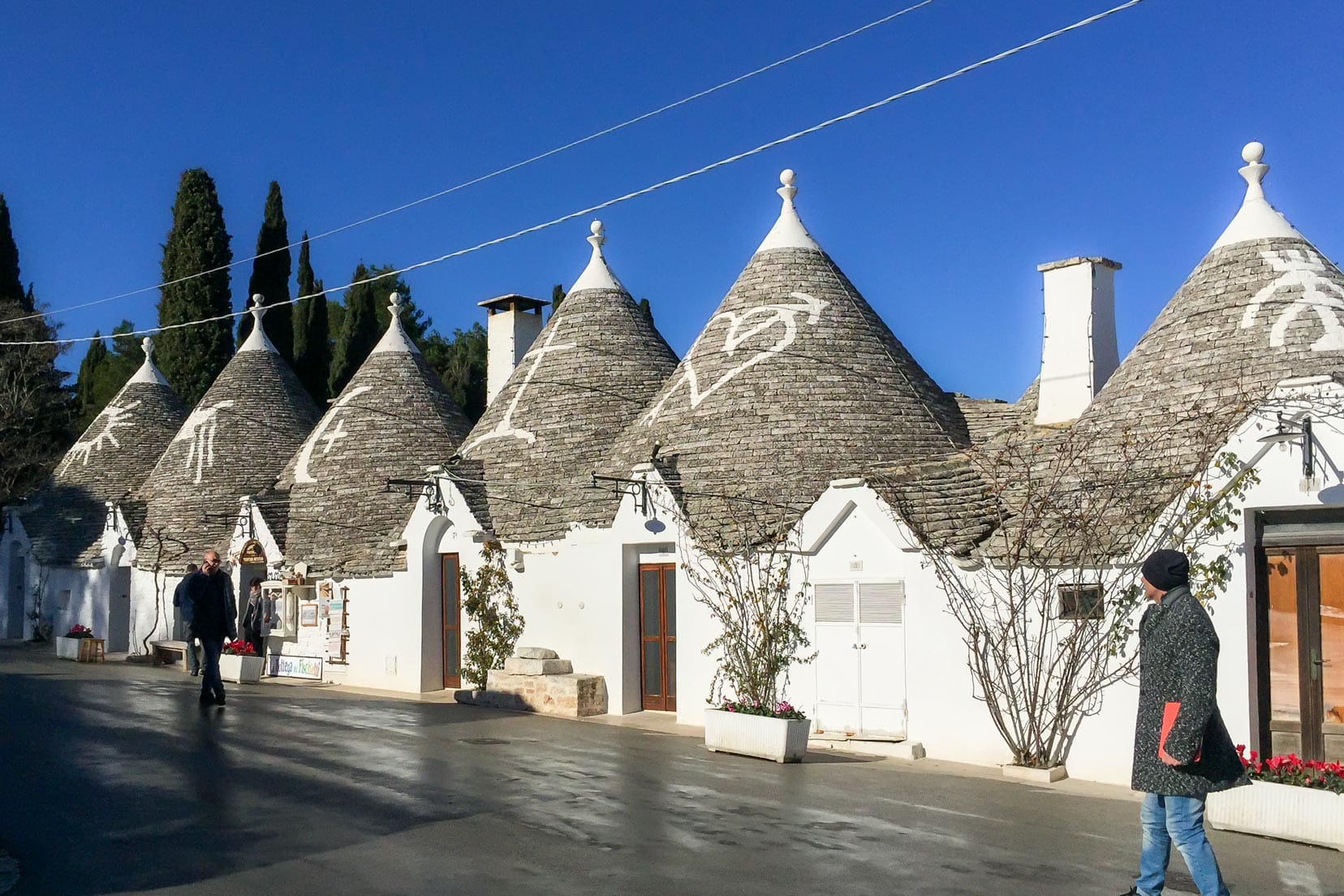
Alberobello Trulli Symbols
Alberobello’s trulli roofs are adorned with white symbols that are both enchanting and mysterious. These include celestial figures like the sun and moon, as well as more obscure symbols such as pagan signs and religious icons.
Each symbol on the trulli roofs has a unique meaning and purpose.
Some symbols are meant to bring good luck and protect against evil spirits, merging spiritual importance with local legends. Others are astrological, designed to guide and protect residents based on ancient beliefs.
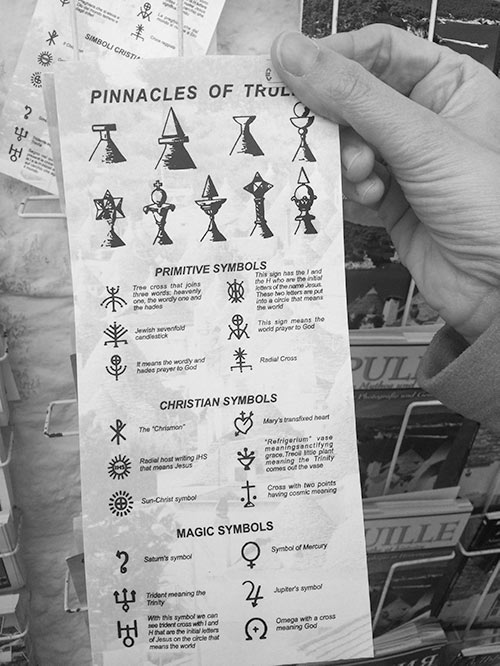
Beyond the Brochure: Exploring Additional Trulli Symbols
Although the brochures available in many Alberobello shops offer a good foundation for understanding the trulli symbols, several symbols painted on the roofs are not listed in these brochures.
These additional symbols, prevalent across the Mediterranean and Europe, reflect a rich blend of cultural, religious, and astrological traditions.
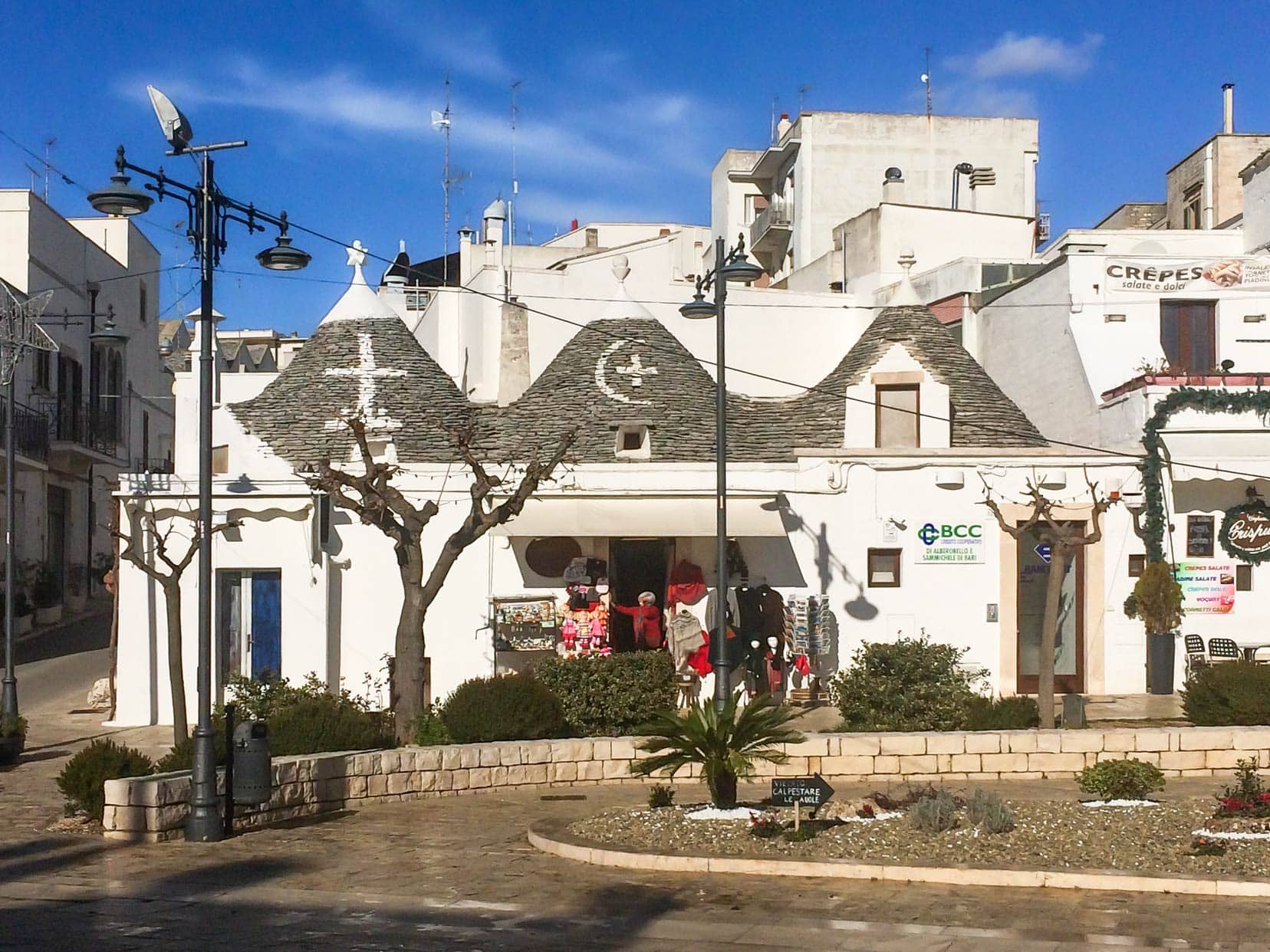
Here are some common themes and their general interpretations:
- Christian Symbols: Including crosses or fish often symbolize protection and faith, a reflection of the deep-rooted Christian heritage in the region.
- Astrological Symbols: Symbols, such as stars or planetary signs, were historically believed to influence destiny and bring good fortune.
- Natural Elements: Depictions of trees, waves, or animals symbolize harmony with nature and are often believed to bring fertility and prosperity.
- Geometric Patterns: These might include spirals or chevrons(v-shaped symbols), which are common in ancient European art and can represent concepts like eternity or the journey of life.
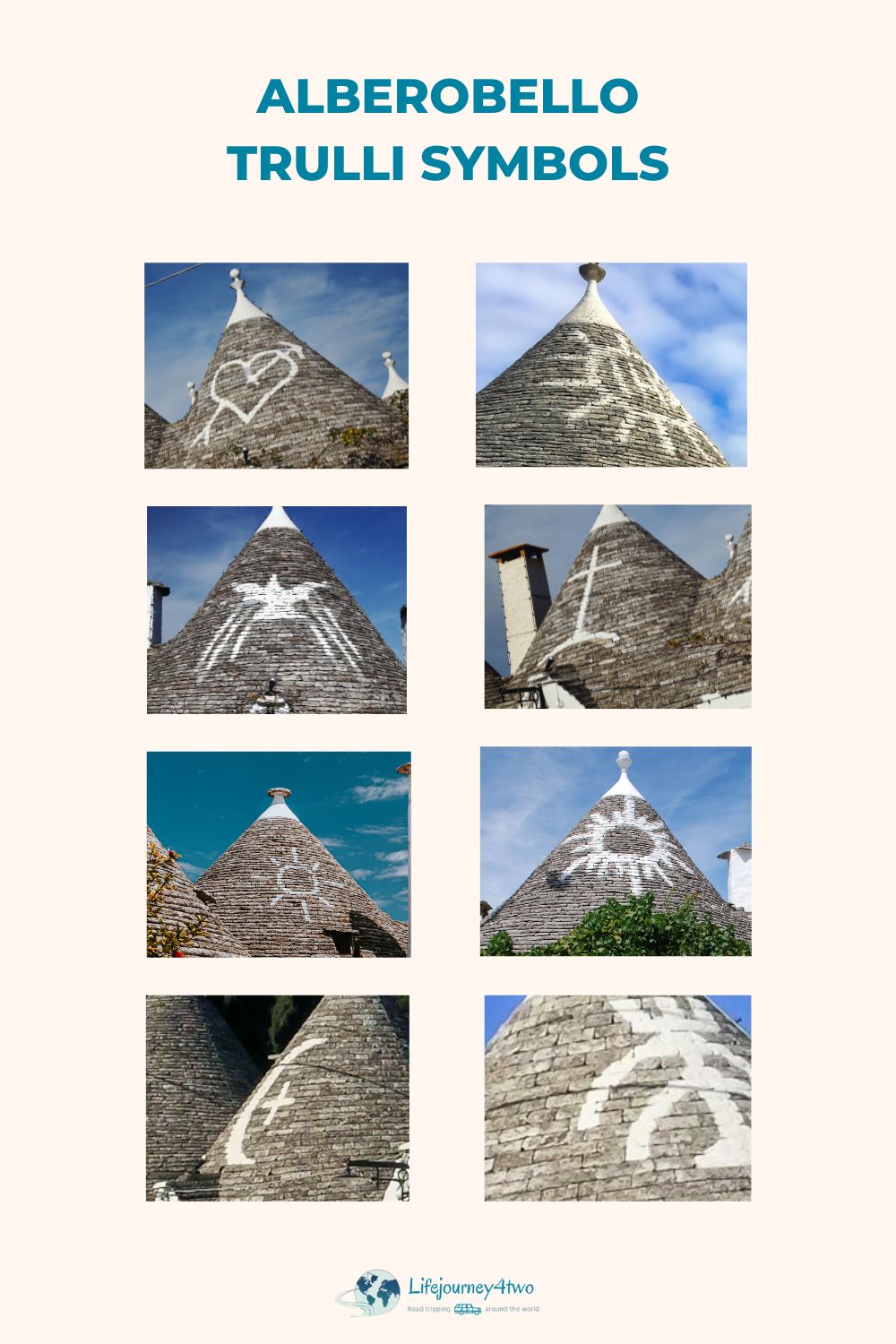
This broader range of symbols offers additional layers of meaning and reflects a diverse blend of influences that have shaped the region’s architectural and cultural landscape.
Exploring the captivating symbols on Alberobello’s trulli roofs reveals connections that reach beyond local customs to universal themes in sacred and historical global architecture.
Geometric shapes like stars, circles, and spirals are not only aesthetically pleasing but carry profound meanings, often seen as protective or spiritual symbols across various cultures.
The science behind these symbols reveals that they can organize particles into symmetrical patterns through sound frequencies—a phenomenon known as Chladni figures in physics.
For a deeper dive into the fascinating interplay of geometry, sound, and symbolism in architecture, read this detailed study.
Planning a Trip to Italy?
- 🚗 Hiring a car? We recommend getting a quote from DiscoverCars
- 🚐 Hiring a campervan? We recommend Motorhome Republic
- ⛑ Arranged your travel insurance? Compare quotes from World Nomads & Safetywing
- 🪪 Order your International Driver’s Licence online here
- 🏩 Booked your accommodation? We use Booking.com to find the best deals
- 🐾 Is someone pet-sitting for you? 🐾 We use and love TrustedHousesitters
- (Get 25% off at checkout for new memberships with our discount code: LIFEJOURNEY25)
History and Architecture of Alberobello Trulli
The Alberobello Trulli, dating back to the mid-14th century in Italy’s Puglia region, are notable for their distinctive construction and historical depth.
Built from dry-stone walls made from locally sourced limestone boulders, these iconic structures were ingeniously designed without mortar, allowing for quick disassembly—a clever method employed by residents to evade taxes imposed by the ruling authorities.

Conical Roofs and Their Significance
Originating from the Greek word ‘Tholos,’ which means ‘dome,’ the term ‘trullo’ aptly describes the structure’s rounded, conical roof.
Each trullo typically consists of a main room beneath this domed roof, often accompanied by two alcoves.
The roofs, constructed using a corbelling technique in which stones are layered outward, are not only visually striking but functionally vital. They offer excellent insulation and resistance to rain, which is crucial for the Mediterranean climate.
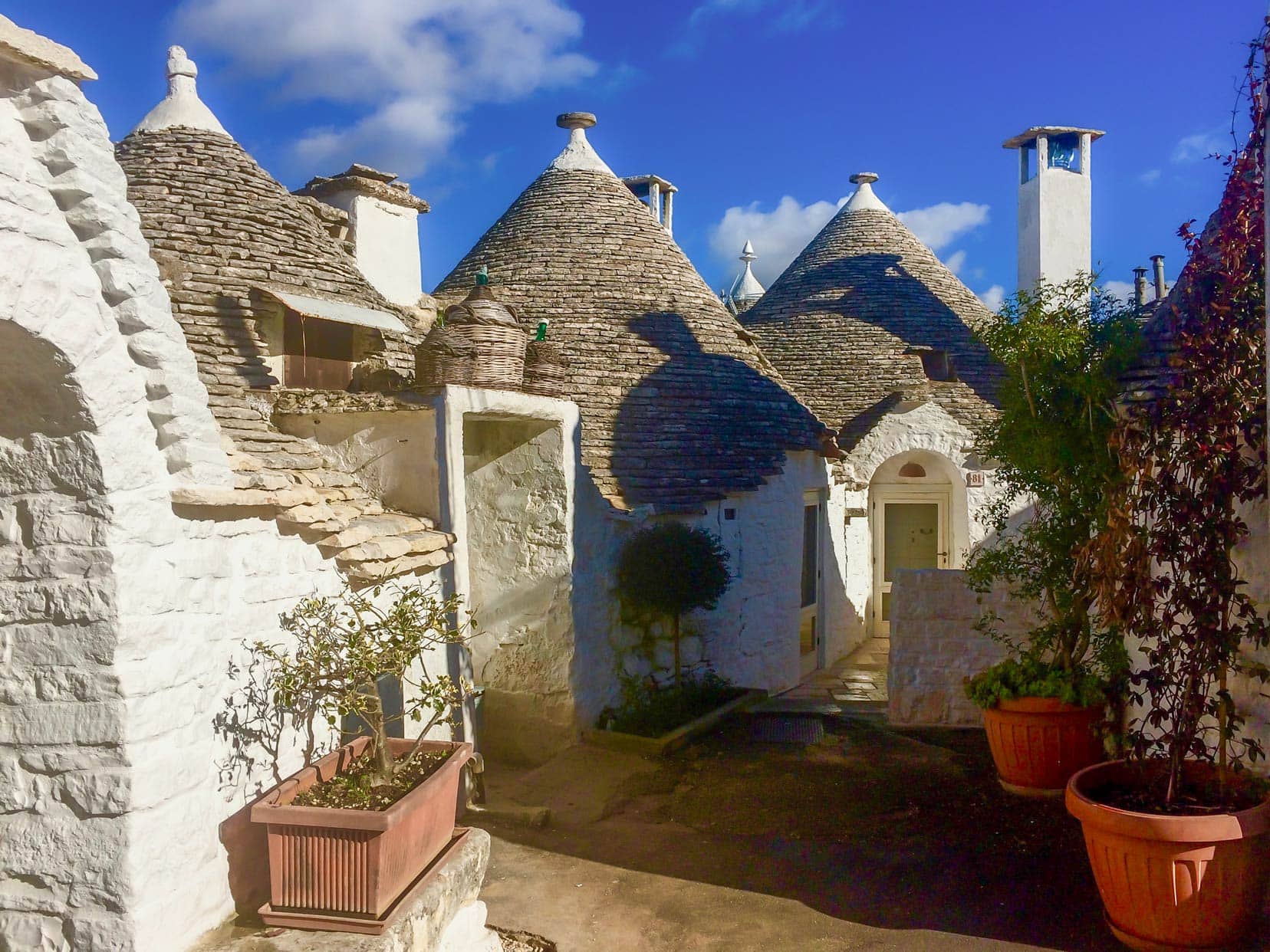
Pinnacles: The Stonemason’s Signature
Each trullo’s cone-shaped roof is crowned with a decorative, handmade sandstone pinnacle. These pinnacles, varying from simple spheres to elaborate geometric shapes, are signatures of the stonemasons.
They not only add to the trulli’s charm but also showcase the rich artisanal heritage and cultural expressions of their creators.
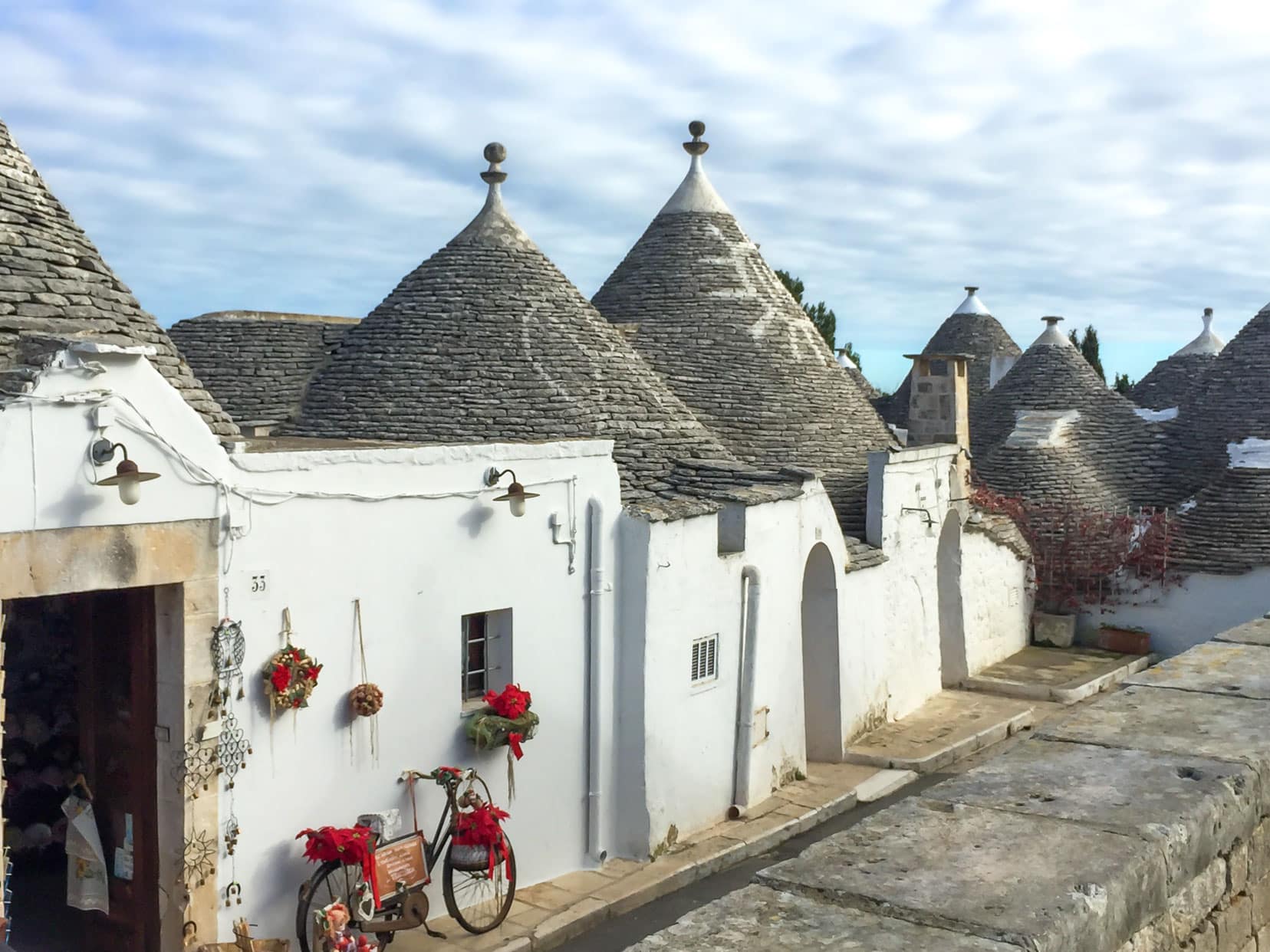
Cultural Resonance and Personal Reflections
Recognized as a UNESCO World Heritage-listed, the trulli of Alberobello captivate visitors with their rustic allure and architectural ingenuity.
The whitewashed walls reminded us of the Cyclades’ iconic architecture in Santorini, Greece. Bright blue domes contrast sharply with stark white walls, creating a crisp, modern aesthetic.
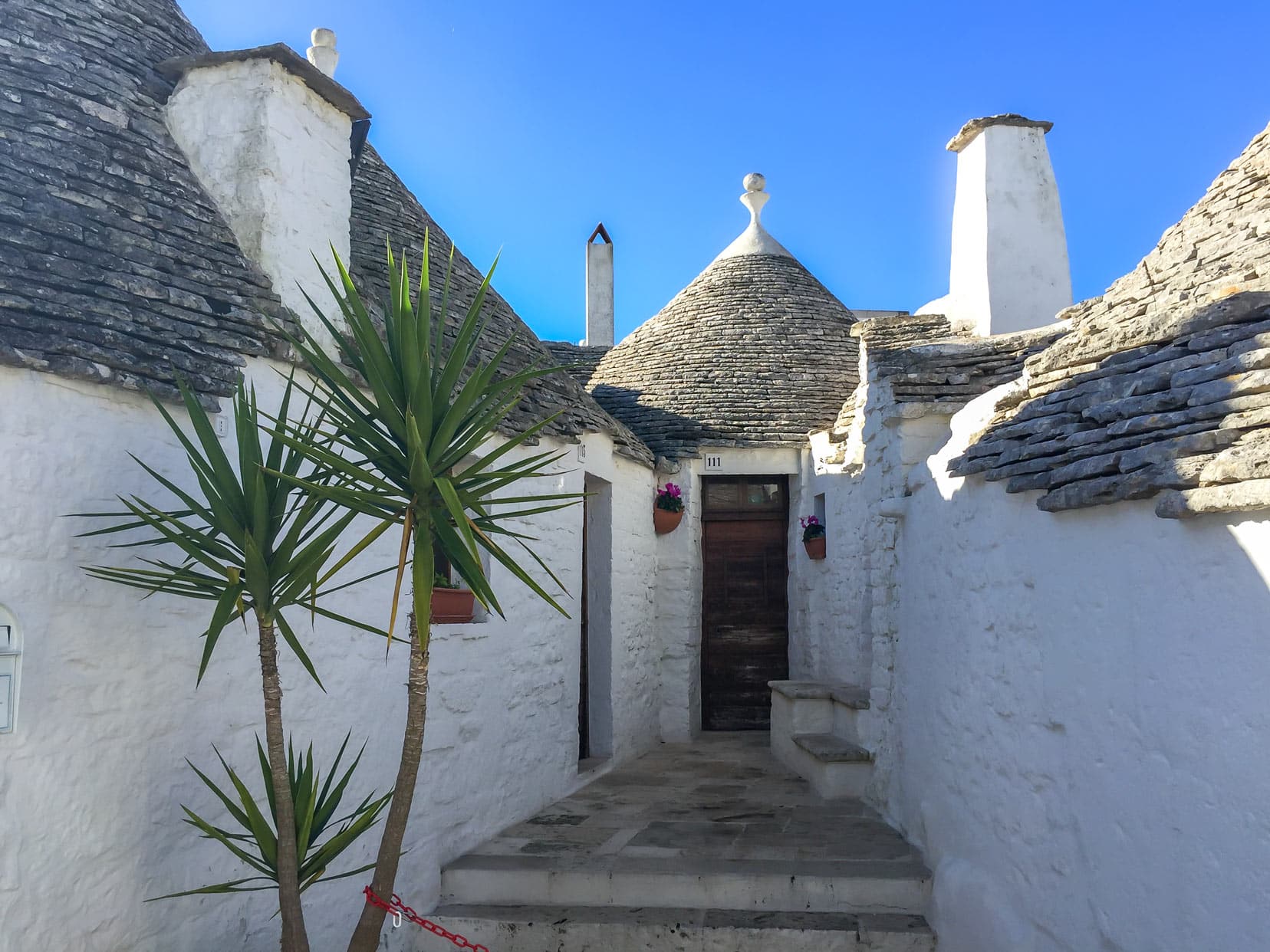
However, unlike Santorini’s vibrant hues, the grey stone conical roofs of Alberobello exude an ancient and mysterious air, enriching our understanding of traditional building methods and their enduring legacy.
For more insights into our experience in Santorini and its architectural parallels, read our detailed post on Santorini in winter.
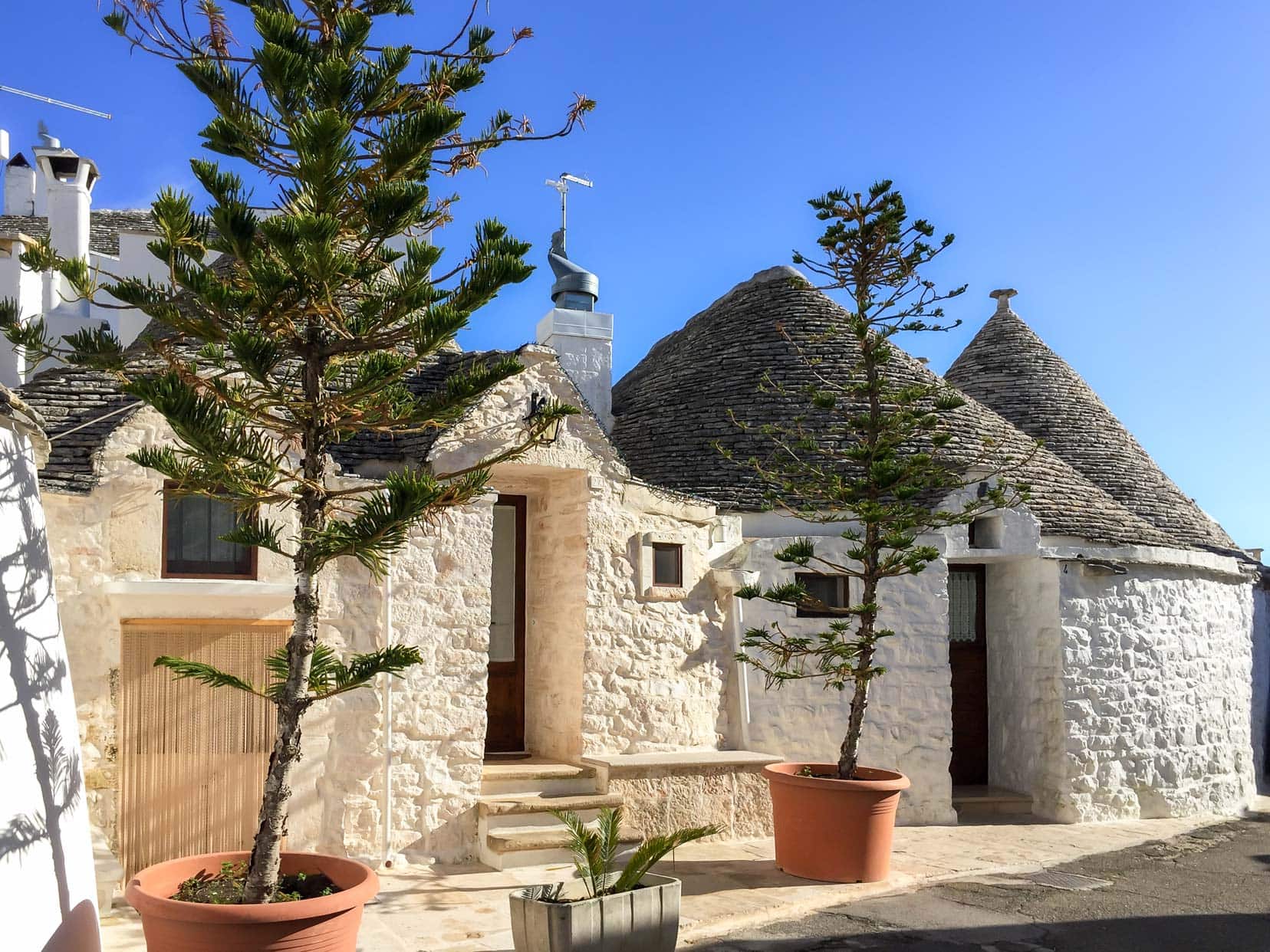
Exploring Alberobello’s Trulli: Rione Monti and Rione Aia Piccola
Alberobello is famed for its Trulli, and its two main districts, Rione Monti and Rione Aia Piccola, offer contrasting glimpses into Trulli architecture.
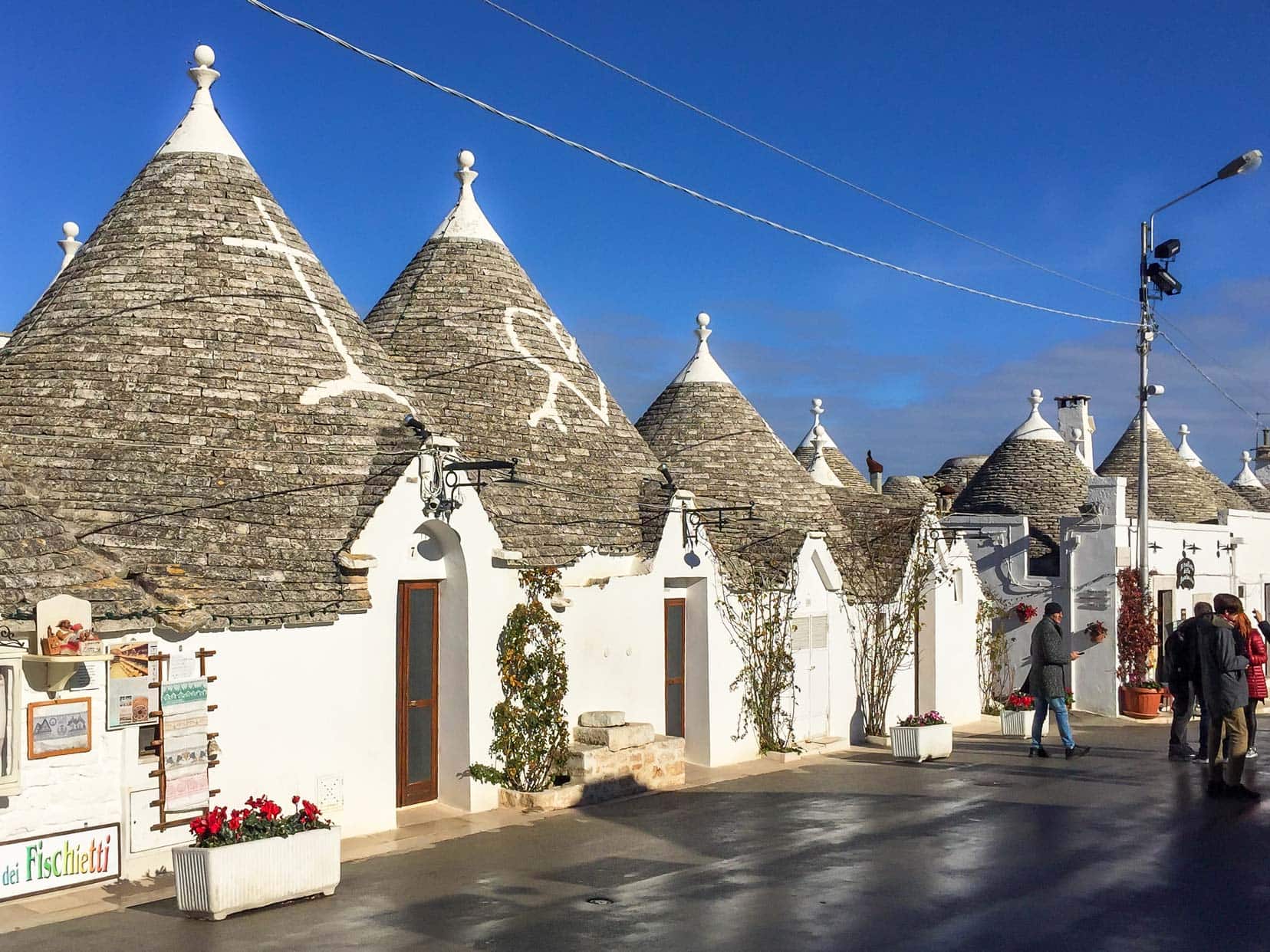
Rione Monti: Alberobello’s Commercial Heart
Rione Monti is Alberobello’s bustling commercial district. Here, you’ll find many Trulli transformed into vibrant souvenir shops and cozy bars.
Although these structures now serve a commercial purpose, a few still remain as residential homes, showcasing a blend of old and new uses.
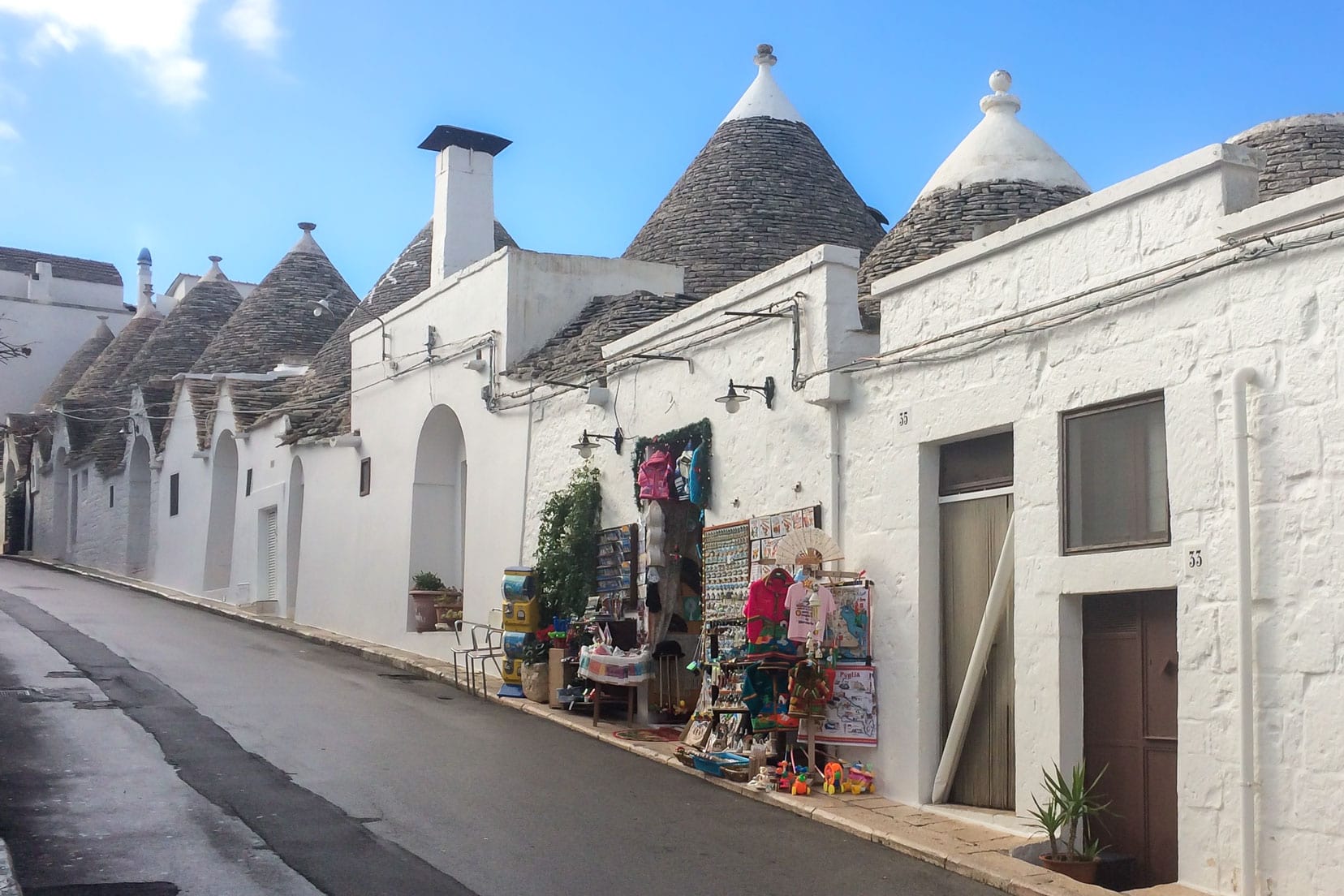
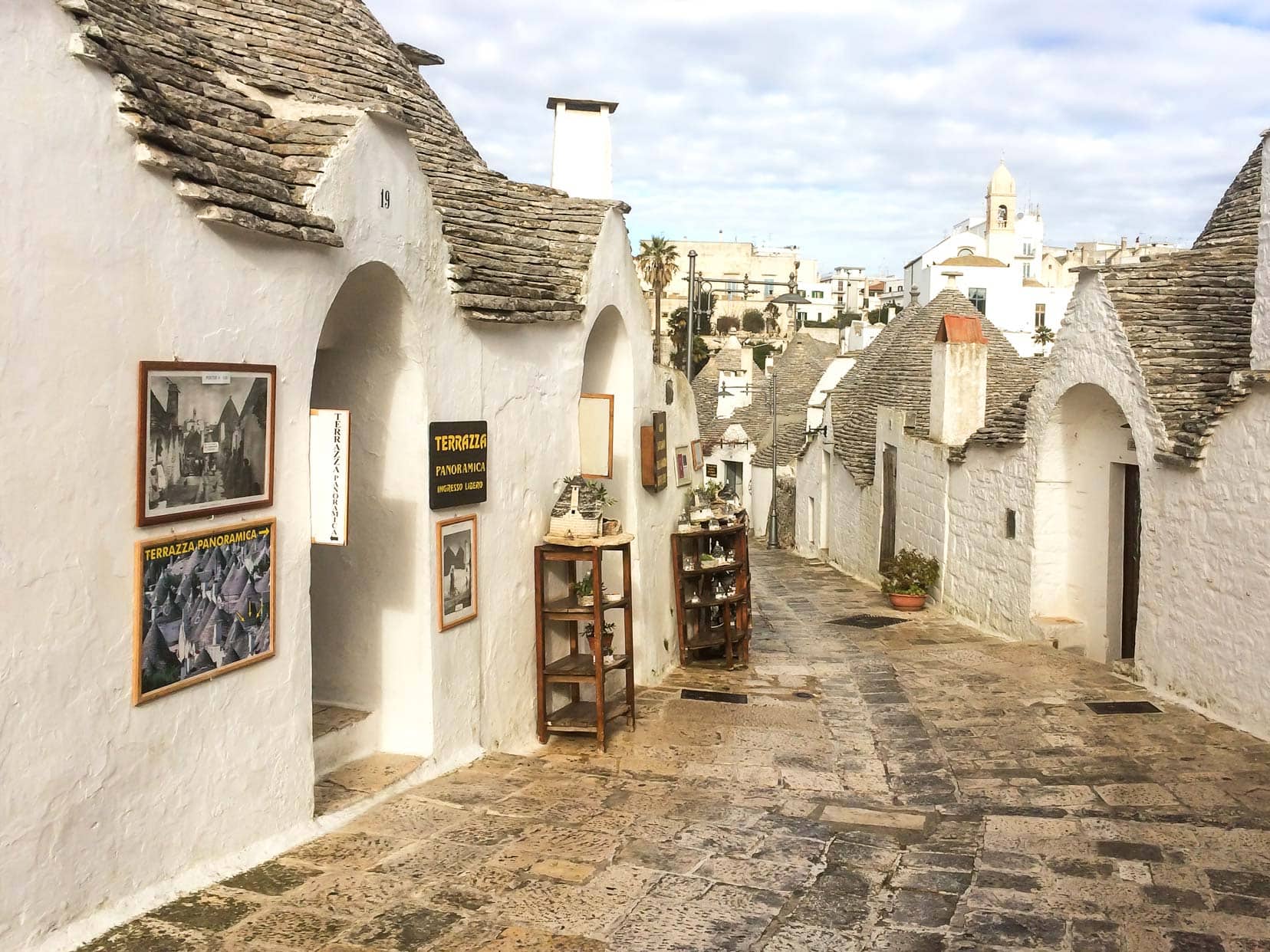
Rione Aia Piccola: A Glimpse into Traditional Trulli Life
In contrast to Rione Monti, Rione Aia Piccola offers a quieter, more authentic experience.
This area houses about 400 Trulli, which are still used as residential dwellings. Its serene streets provide a deeper insight into the traditional lifestyle that has long characterized these remarkable structures.
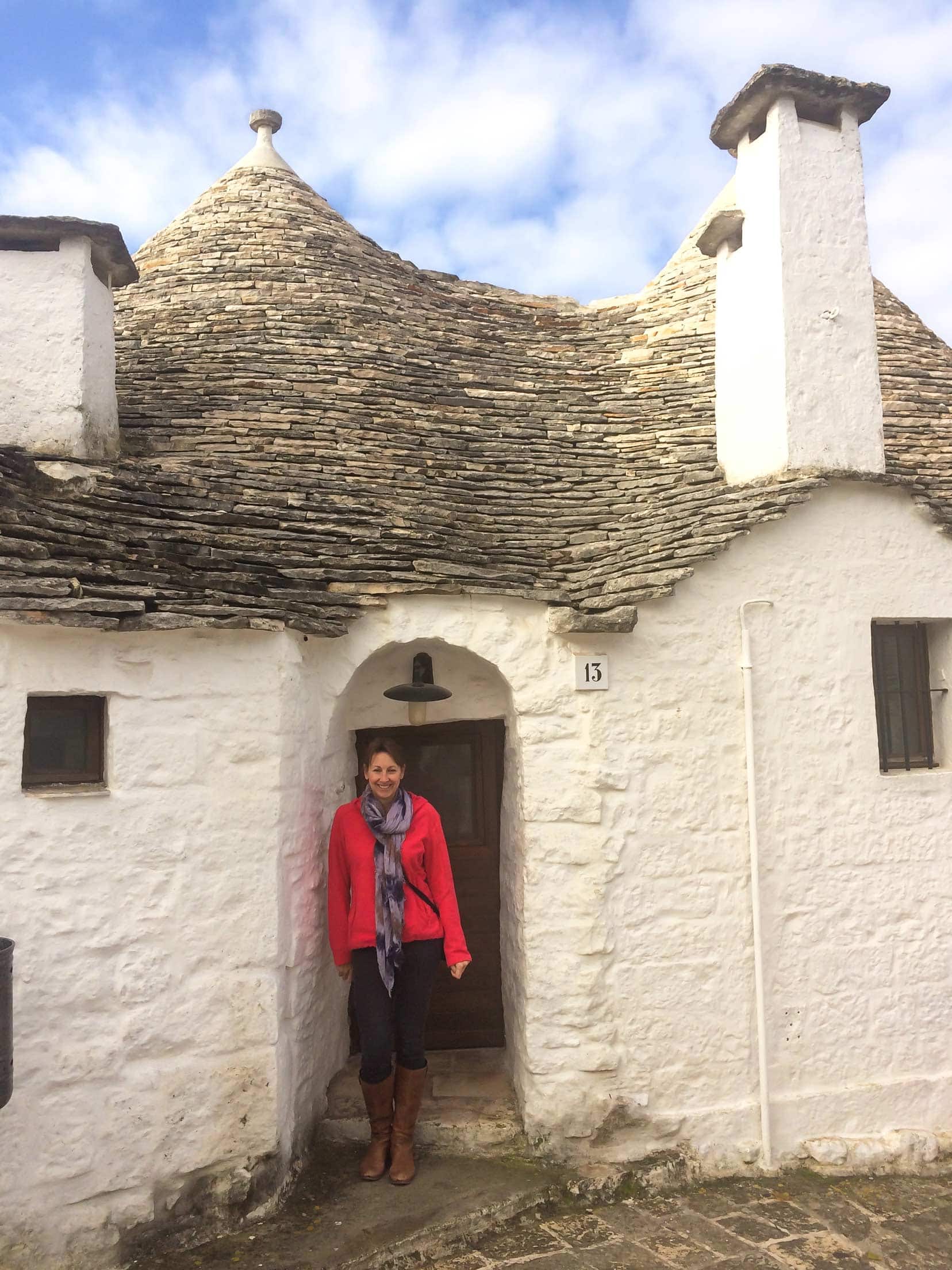
Architectural Variants and Cultural Gems of Alberobello
Explore beyond the typical homes to discover architectural innovations such as Chiesa di Sant Antonio, with its Trulli-like domes and bell tower seamlessly fitting into the Alberobello skyline.
Don’t miss Trullo Sovrano and Museo del Territorio, where you can visit the two-storey Trulli that now serves as an intriguing museum.
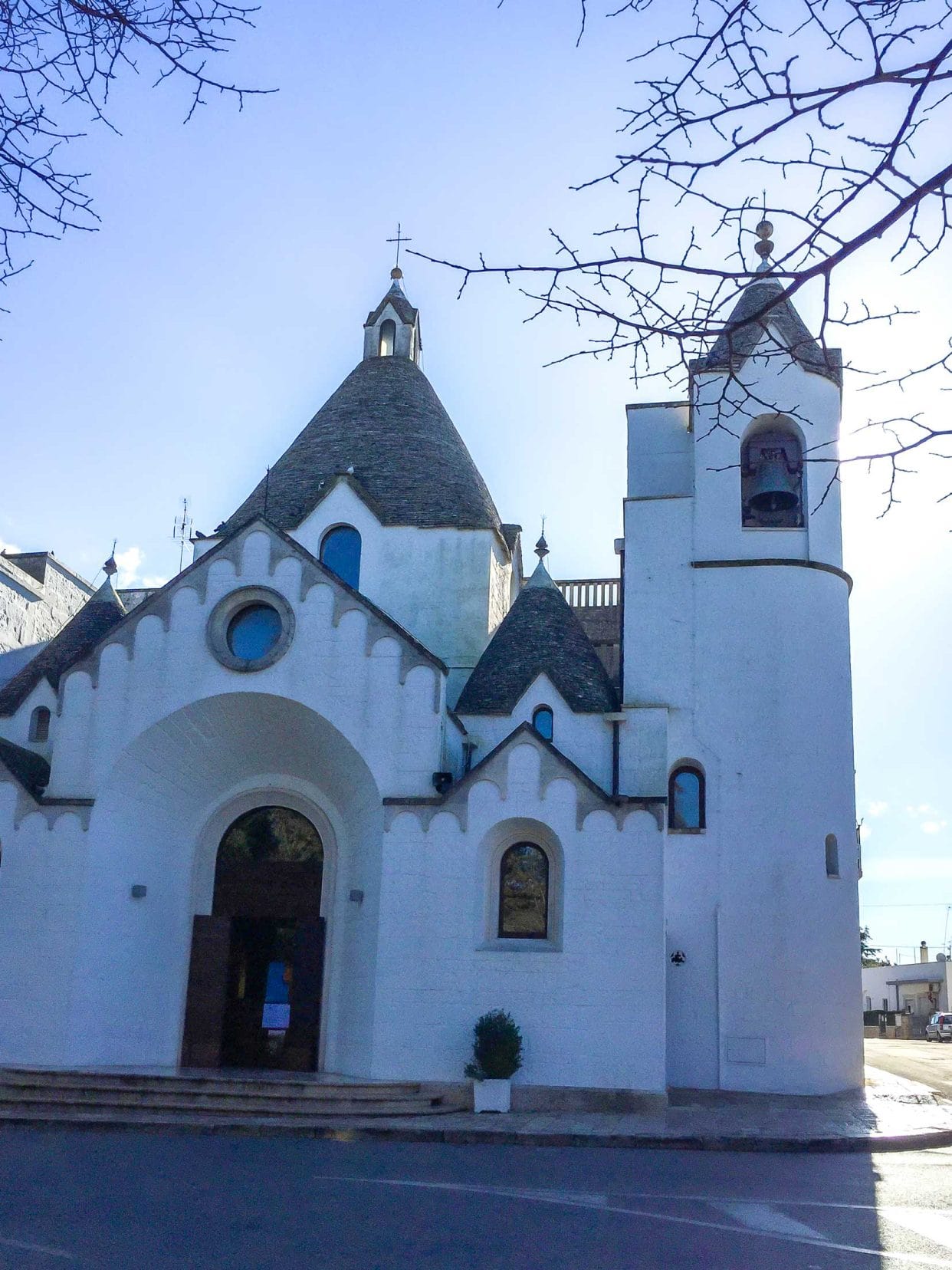
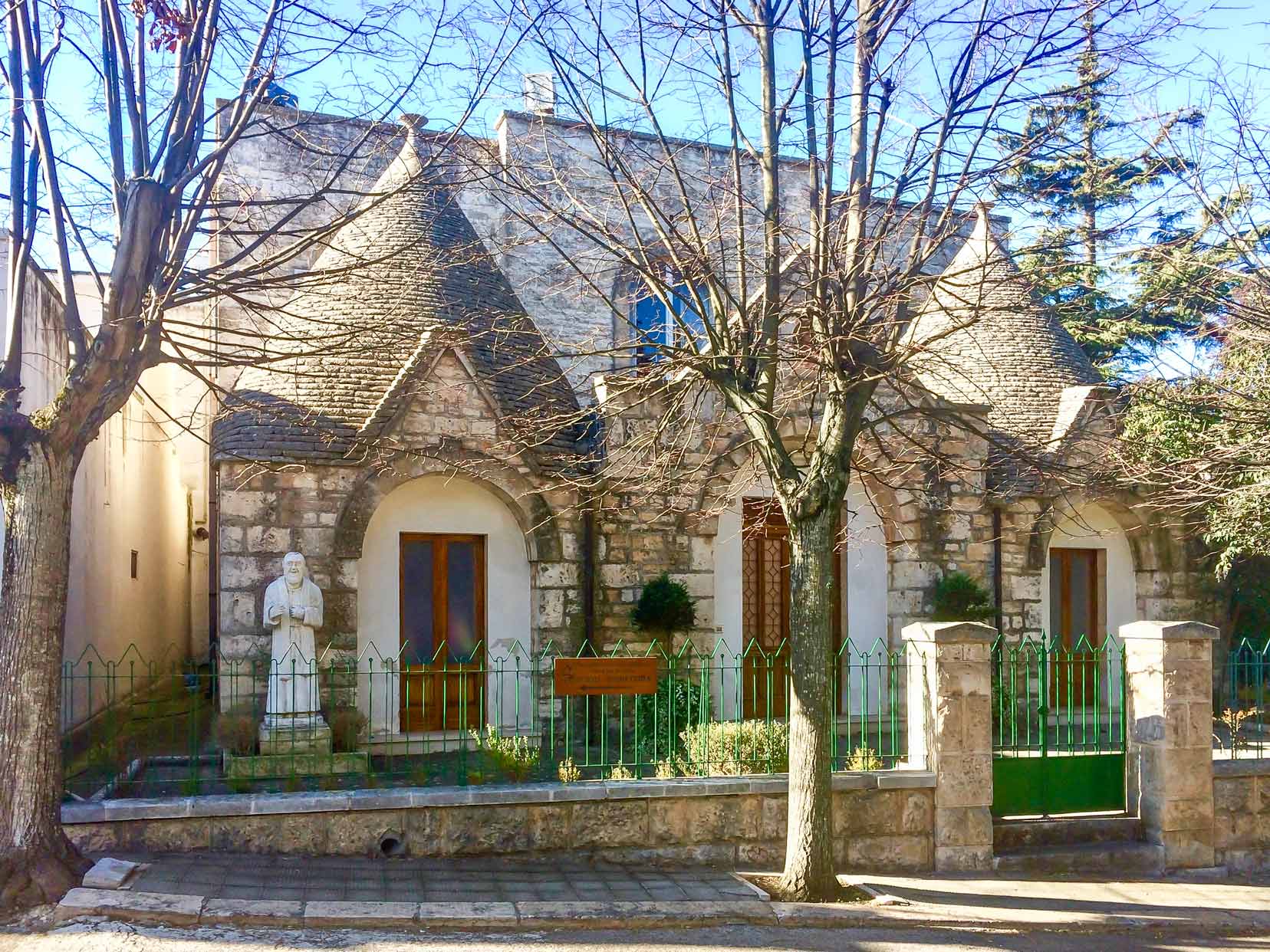
Alberobello Trulli Accommodation
Many of the Trulli in Alberobello have been renovated and converted into tourist accommodations.
Here are some of the trulli highly rated by their guests.
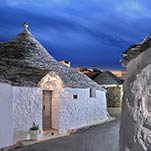
Trulli Holiday Albergo Diffuso – have various Trulli for rent in Alberobello. A member of the team greets you and personally takes you to your Trulli.
⭐️ Rated 9.4 Click Here for More Info …
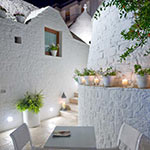
Le Alcove – Luxury Hotel also has a series of Trulli huts luxuriously renovated with all modern amenities. In your Trullo, you can expect to find free Wi-Fi, satellite TV and L’Occitane toiletries. Some have a spa bath.
⭐️ Rated 9.2 Click here for more info.
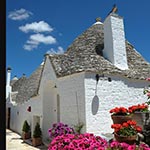
Romantic Trulli B&B—Situated in Alberobello, Romantic Trulli offers air-conditioned apartments in typical Trulli stone buildings. A sweet and savoury breakfast is provided daily.
⭐️ Rated 9.6 Click Here for More Info.
Alberobello Campsite
We had luckily researched ahead and knew that parking the motorhome would be difficult in the centre of Alberobello.
We found a Campercontact stop, Area Sosta Nel Verde, in the town where we could also overnight. The camper site had electricity and rubbish disposal but no other facilities.
It was, however, very convenient to Alberobello town centre, which was only a five-minute walk away.
How to get to Alberobello
Tours are an excellent choice for those without personal transport. They offer convenience and guided insights, making them ideal for fully appreciating the historical and cultural context of Alberobello and nearby Matera.
Alberobello by Tour
If you don’t have your own transport, booking a tour is the easiest way to see Alberobello and nearby Matera. Most tours pick up visitors from Bari.
🚐 This Matera and Alberobello tour lasts between 6 and 8 hours and includes visits to a sassi and trulli and informative guided tours around both towns. Book or find out more here.
Alberobello By Car
Driving offers the most flexibility, allowing you to explore Alberobello at your own pace and venture into the surrounding areas with ease.
We were travelling by camper and easily parked in the Area Sosta Nel Verde – see map.
⭐️ If you are thinking of hiring a car, check Discover Cars to find a great deal or GoSee (formerly the Motorhome Republic) for great service and deals on campervans and motorhomes.
Alberobello By Train
Train travel can be a scenic and relaxing way to reach Alberobello, though depending on your route, it may require a transfer.
Alberobello has a train station, and trains from Bari on the Ferrovie Sud Est line run through it, but you may need to change at Putignano.
Alberobello By Bus
For those looking for a direct route without the need for personal transport, the bus service from Bari provides a straightforward and cost-effective option.
A direct bus route travels from Bari and takes about 1 hour and 45 minutes to reach Alberobello. Times and rates are available at trenitalia.com.
FAQs about the Trulli of Alberobello
1. What is Alberobello Trulli, and where are they located?
The Alberobello Trulli are unique cone-shaped homes with dry-stone walls made of corbelled limestone slabs. They are located in Alberobello, a town in the district of Bari, Puglia, Southern Italy.
2. Why do the Alberobello Trulli have strange symbols on their roofs?
The white symbols painted on the roofs of Alberobello Trulli have various meanings. Some are of religious significance, while others are astrological. The purpose of these symbols was to ward off demons and bring good luck to the inhabitants.
3. What do the different shapes of pinnacles on the Alberobello Trulli represent?
The pinnacles on top of the Trulli roofs come in different designs and represent the trademarks of the stonemasons who built each Trullo. Some pinnacles have disc-like shapes with a sphere above, while others have larger flat disc-like shapes.
4. How did Alberobello Trulli come into existence?
The Alberobello Trulli originated around the 15th Century and were initially built “a secco,” without mortar, to avoid paying settlement taxes to the King of Naples. They became permanent fixtures after the town gained independence in 1797.
5. Which areas in Alberobello can I find the Trulli?
There are two main districts where you’ll find Trulli in Alberobello: Rione Monti and Rione Aia Piccola. Rione Monti is more commercialized, with many Trulli converted into shops and bars, while Rione Aia Piccola has about 400 Trulli used as residential dwellings.
6. What are some recommended activities to do in Alberobello?
Some recommended activities in Alberobello include exploring Rione Monti and Rione Aia Piccola, visiting the Chiesa di Sant Antonio and the Sanctuary of the Santi Medici, trying the local delicacy called “Pasqualino,” and taking a trip to Matera, known for its ancient cave houses (Matera Sassi).

Alberobello Trulli … That’s a Wrap
These tiny hobbit-like homes were captivating. Alberobello transports you into a real-life fantasy world full of mystery and magic.
We saw so many wonderful places in our ‘year in the van‘ travels throughout Europe, but the Alberobello Trulli will stand out as something very special, unique and amazing.
Have you visited these unique homes? Experienced anything similar?
If so, we’d love to hear about it. Leave us a comment below.
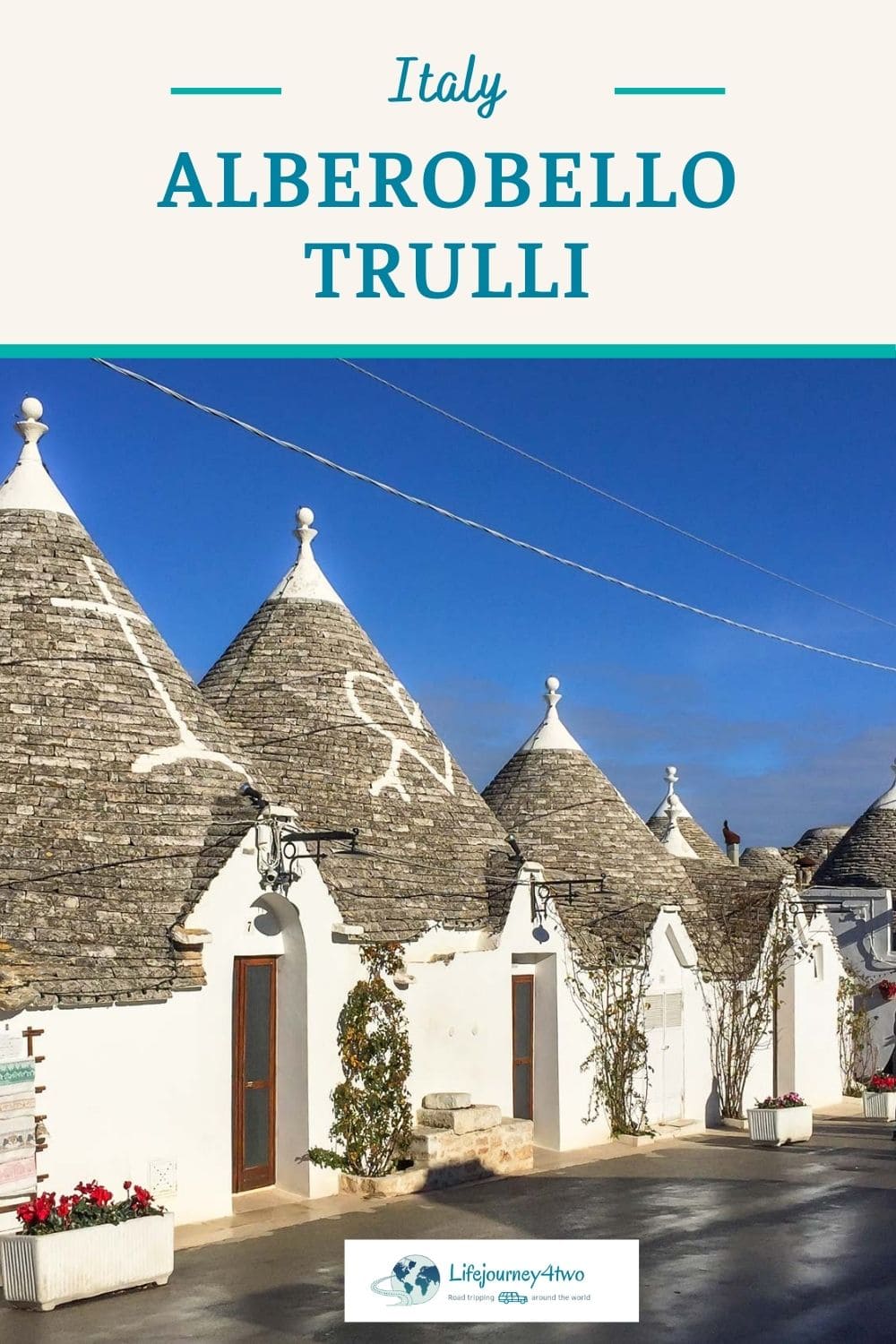
Read more on Italy:
- Sicily Road Trip: Sensational 7-day Itinerary, Italy
- Cavagrande del Cassibile Hike, Sicily
- Palermo Catacombs – Meaningful or Macabre?
Planning Your Travels?
These are the travel resources we recommend and use when planning our trips.
- 🚘 Car Hire: We use DiscoverCars.com
- Motorhome/Campervan Rental: We highly recommend the Motorhome Republic
- 🪪 Order your International Driver’s Licence online here
- 🛏 Book Accommodation: We use Booking.com to find accommodation that suits our budget
- 🐶 Pet Sitting/Pet Sitters: Check Out TrustedHousesitters here (Use our Discount code: LIFEJOURNEY25 for 25% off. )
- Activities and Experiences: Get Your Guide and Viator
- Travel Insurance: Safetywing or World Nomads
- 🥾 Travel Gear and Accessories: Check out our top picks here — Lifejourney4two page on Amazon
For a more thorough list, visit our Travel Resources page here.

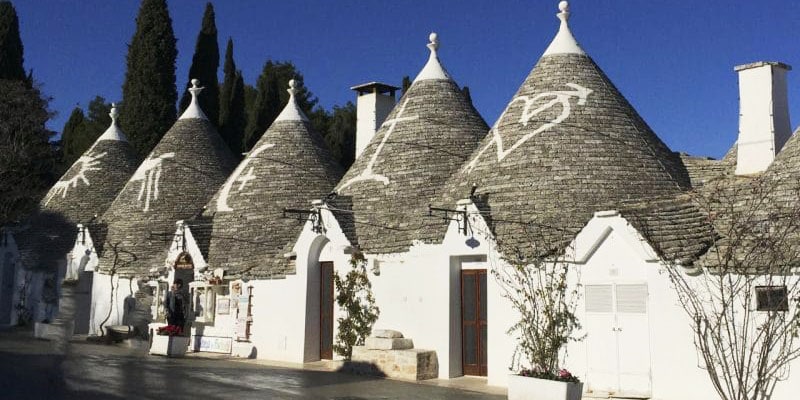
I’ve always been intrigued by the Trulli Houses. However I knew little before and I didn’t realise the sheer volume of houses there was. Not that there are still 1300 inhabitants- wow. Beautiful blog too, your photos are great. I hope to make it down to this part of Italy at some time.
Thanks so much John, the Trulli are really interesting, aren’t they. We hadn’t heard of them until we were in the area and did some research on what to see and they were certainly intriguing.